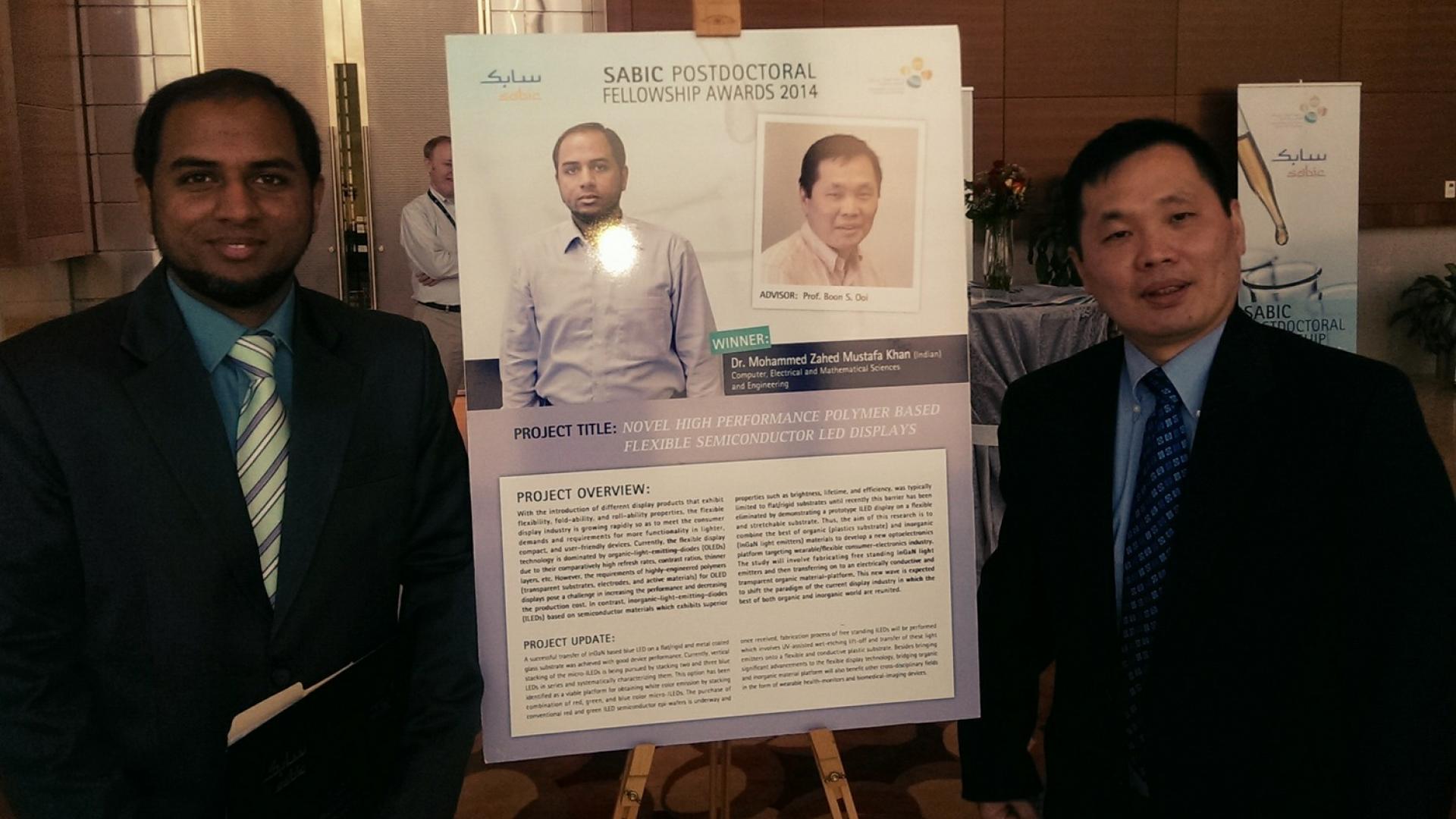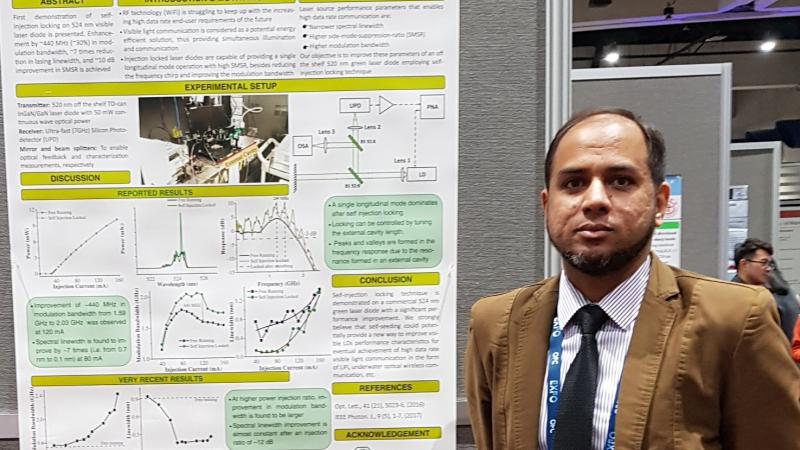Photonics lab member Mohammed Zahed Mustafa Khan has successfully defended his PhD dissertation and graduates from KAUST class 2013.
Semiconductor Quantum Dash Broadband Emitters: Modeling and Experiments
Abstract
Broadband light emitters operation, which covers multiple wavelengths of the electromagnetic spectrum, has been established as an indispensable element to the human kind, continuously advancing the living standard by serving as sources in important multi-disciplinary field applications such as biomedical imaging and sensing, general lighting and internet and mobile phone connectivity. In general, most commercial broadband light sources relies on complex systems for broadband light generation which are bulky, and energy hungry.
Recent demonstration of ultra-broadband emission from semiconductor light sources in the form of superuminescent light emitting diodes (SLDs) has paved way in realization of broadband emitters on a completely novel platform, which offered compactness, cost effectiveness, and comparatively energy efficient, and are already serving as a key component in medical imaging systems. The low power-bandwidthproduct is inherent in SLDs operating in the amplified spontaneous emission regime. A quantum leap in the advancement of broadband emitters, in which high power and large bandwidth (in tens of nm) are in demand. Recently, the birth of a new class of broadband semiconductor laser diode (LDs) producing multiple wavelength light in stimulated emission regime was demonstrated. This very recent manifestation of a high power-bandwidth-product semiconductor broadband LDs relies on interband optical transitions via quantum confined dot/dash nanostructures and exploiting the natural inhomogeneity of the self-assembled growth technology. This concept is highly interesting and extending the broad spectrum of stimulated emission by novel device design forms the central focus of this dissertation.
In this work, a simple rate equation numerical technique for modeling InAs/InP quantum dash laser incorporating the properties of inhomogeneous broadening effect on lasing spectra was developed and discussed, followed by a comprehensive experimental analysis of a novel epitaxial structure design. The layered structure is based on chirping the barrier layer thickness of the over grown quantum dash layer, in a multi-stack quantum dash/barrier active region, with the aim of inducing additional inhomogeneity. Based on material-structure and device characterization, enhanced lasing-emission bandwidth is achieved from the narrow (2 µm) ridge-waveguide LDs as a result of the formation of multiple ensembles of quantum dashes that are electronically different, in addition to improved device performance. Moreover, realization of SLDs from this device structure demonstrated extra-ordinary emission bandwidth covering the entire international telecommunication union (O− to U−) bands. This accomplishment is a collective emission from quantum wells and quantum dashes of the device active region. All these results lead to a step forward in the eventual realization of more than 150 nm lasing bandwidth from a single semiconductor laser diode.

